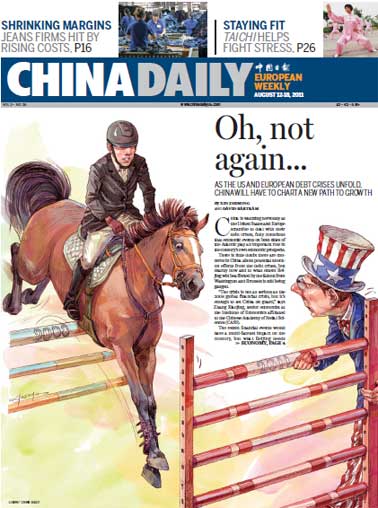People
Addicted to Tian'anmen
Updated: 2011-08-18 08:14
By Zhang Zixuan (China Daily)
|
Yan Shujun's office is packed with his collection of articles related to Tian'anmen rostrum. Zhang Zixuan / China Daily |
|
Yan presents his collection at a recent exhibition, The Story of Tian'anmen, at the Capital Museum of Beijing. Provided to China Daily |
A PLA soldier, who can't get enough of Tian'anmen rostrum, has built up a massive collection of photos, books and even products carrying its image. Zhang Zixuan reports.
Yan Shujun says his love for Tian'anmen is a result of his rural background and his feeling as a kid that it was the center of the universe.
His huge 20-year collection of memorabilia is the product of his abiding love for the Tian'anmen rostrum, which was built in 1420 and has had special political significance since 1949, when Chairman Mao Zedong announced the founding of the People's Republic of China (PRC).
The collection has more than 40,000 photos of Tian'anmen rostrum, 10,000 goods that have the images of the building, and 6,000 volumes of foreign books with its theme. And the collection is still growing.
The 46-year-old says that Tian'anmen is a dream-like symbol for many Chinese, particularly in the second half of the 20th century, which is why so many people go there and take photos.
"Tian'anmen is an encyclopedia. I'm addicted," Yan says.
The senior colonel at the Academy of Logistic Command of People's Liberation Army (PLA), was born and raised in rural Hebei province and says he had wanted to see Tian'anmen from the age of 6.
Seventeen years later, in 1988, he had his chance to see it for the first time and was so overwhelmed he just stood there for 20 minutes.
In 1991, as a soldier at PLA Academy of Arts in Beijing, he started to collect materials about Tian'anmen and became to determined to know it better than the locals.
"It has taken 20 years to realize this dream," Yan says, whose home and office is packed with framed photos, cookie boxes, mirrors and badges about Tian'anmen.
Though it looks messy, Yan claims it is all organized according to source, year, and historical background.
His collection has objects from 1860 to the present day and never fails to highlight every memorable moment and reveal the evolution of China's politics, military affairs and even fashion.
On a marriage certificate from the planned economy era, for example, a stamp says, "The quilt has been purchased", indicating this was when coupons were a form of currency and couples were only allowed to buy one quilt after they married.
Yan's collection presents eight different versions of Mao's portrait hung on the rostrum. Other photos without the portrait show the time before 1966, when Mao's portrait only hung during May Day and National Day.
"Yan's collection provides a perceptual and visual history," comments Huang Xueyin, vice-curator of Capital Museum, which recently exhibited 140 photos and 60 objects borrowed from Yan, naming it The Story of Tian'anmen.
"I'd rather call myself a researcher than a collector," says Yan, who has published 23 books on various aspects of Tian'anmen. A new photo album series featuring celebrities standing in front of the rostrum is under way.
Yan is looking for more old photos and objects, and he photographs Tian'anmen every week, while enthusiasts have donated their collections to Yan.
|
Articles from Yan's collection, from top clockwise: gold and silver rings; an ink pad; a photo of a parade by athletes in 1954; a company share certificate from 1957; a marriage certificate; a photo of the rostrum with the second version of Chairman Mao Zedong's portrait that was used for just one day on May 1, 1950; and a wallet. Photos Provided to China Daily |
E-paper

Going with the flow
White-collar workers find a traditional exercise helps them with the frustrations of city life
The light touch
Long way to go
Outdoor success
Specials

Star journalist remembered
Friends, colleagues attended a memorial service to pay tribute to veteran reporter Li Xing in US.

Robots seen as employer-friendly
Robots are not new to industrial manufacturing. They have been in use since the 1960s.

A prosperous future
Wedding website hopes to lure chinese couples



